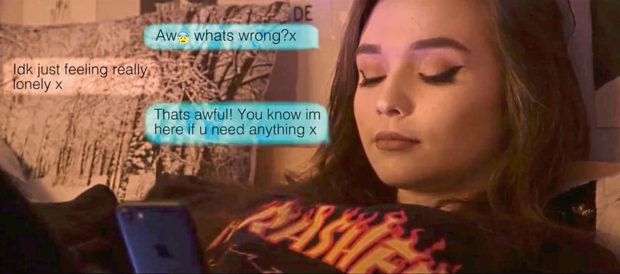A film created by students to highlight the dangers of social media is to be shown at schools across Scotland.
Overexposure tells the story a teenage girl who sends an explicit image to a boy which he then shares online.
Created and produced by students at North East Scotland College (NesCol), the film has already had more than a million views online.
Director Kirsty Craib, 23, from Westhill, said that she and fellow writer Jack McCann drew on personal experience when they developed the idea.
She said: “Jack and I decided to try and write a script that would highlight the dangers for both the sender and receiver.
“These kind of situations happened when we attended school – which wasn’t that long ago.”
The student team took just over a month to gather a crew, audition actors, scout locations and complete paperwork.
In comparison, the filming took place within just two days – in order to fit in with the student production team’s class schedules.
Miss Craib added: “I think sexting is quite a new issue in society.
“Ten or 15 years ago not as many school kids would have a phone, and if they did it probably wouldn’t have had a camera.
“It certainly wouldn’t have had the social media access we all have today, which is how news and rumours spread so fast and cyber bullying is made far too easy to carry out.
“I think technology has brought many benefits to us by allowing a wider connection to everyone everywhere, but we should acknowledge the negative aspects too in order to inform people about possible dangers.”
Tony Young, curriculum manager for music, drama, animation and media at NesCol said: “Raising awareness of the dangers of sharing intimate images, and the potentially devastating and life-changing effects it has can only be a positive.
“We are very proud this piece of student work has been so well received.”
The film was created with support from Young Scot and Aberdeenshire East MSP Gillian Martin.
Ms Martin said: “The only way we can protect young people from these dangers is to share information on what can happen to them personally, and where the law stands on this.
“The decision not to share has to be one that young people feel confident in making.
“It is easy for parents and adults to lecture young people, but peer pressure is massive, so those conversations need to be taking place between peers too.”











